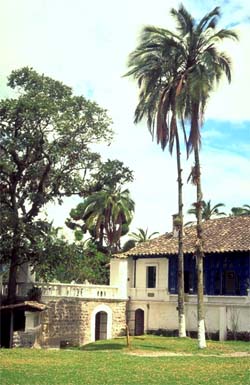Parajubaea cocoides Information
A solitary, massive, slow growing, monoecious palm. Rare in cultivation, not known in the wild. It has a smooth, grey trunk, 16 m. (52.5 ft.) tall, 30.5 cm. (12 inch) diameter with no obvious leaf scars, and large segmented, pinnate (feather) leaves, 3.7 m. (12 ft.) long, 1.2 m. (4 ft.) wide, dark green above and beneath.
Stem usually thickest in the middle. Leaves 20-30, spreading, the lower ones pendulous, 3-4 m long; pinnae 60-70 on each side, narrow, dark green, regularly inserted and spreading in one plane, the central ones 60-70 cm long and ca. 3 cm wide. Inflorescence 1-2 m long, with 50-70 short branches, 10-30 cm long. Infructescence pendulous, overhung by a large, woody, peduncular bract, the fruits forming a compact, cylindrical mass from which the branch tips are sticking out. Fruits green, smooth, beaked, 4-5.5 cm long, 3-4 cm wide.
Parajubaea cocoides can tolerate freezing temperatures to about -6.5°C (20.3°F). It naturally occurs in arid, open, sun exposed, montane locations, and should be planted to maximise sunshine exposure. Under extreme freezing conditions we recommend you keep this palm as dry as possible. It should be noted that in its natural habitat the temperature swings between extreme heat and extreme cold occur within 12 hours (night & day) of a single day, and have little to do with Summer/Winter seasons. Therefore, this palm dislikes long durations of cold weather and may require additional heat or protection during the coldest weather.
Identification:
This is a large palm, typical of a coconut palm. Parajubaea cocoides, until 2010 was not known in the wild. This species had been recorded only as being cultivated in Ecuador (Quito) and Colombia (Pasto) and was not known with certainty from the wild. Parajubaea cocoides has now been found growing wild, with a large population, in the Peruvian Andean region, in the district of Tabaconas (1900 m above sea level), located in the province of San Ignacio, in the northern part of the department of Cajamarca, Peru. Its assumed closest relative, Parajubaea torallyi var. microcarpa is native to Bolivia. Planted as an ornamental street tree in Andean towns throughout Ecuador and southern Columbia, mostly at elevations between 2500 and 3000 m.
General Information:
This palm commences growth at very low temperatures here in the Cornish climate (Cornwall has a very mild climate in the UK) the plant continues to put out new leaves throughout the winter where temperatures are over 5°C, which is not necessarily a good thing, as tender new leaves can be burnt by frost, and the palm can be killed at -6°C. You must therefore be prepared to provide protection for the most severe cold spells.
Distribution:
Native to, Colombia, Ecuador, Peru
Location: Peru (-0.000481°N, -79.207306°E)

